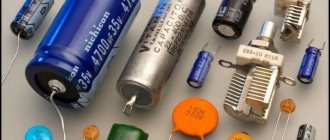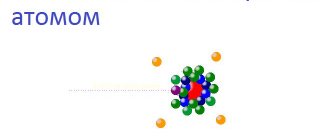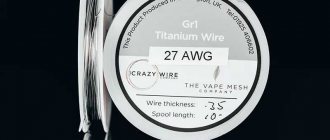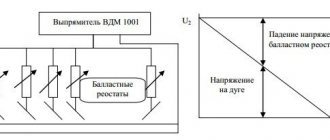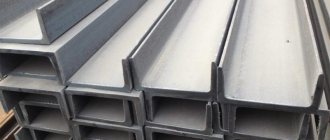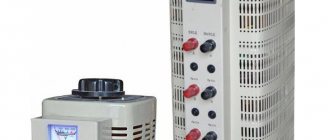Temperature dependence
Electrical resistivity depends on temperature. But all groups of substances manifest themselves differently when it changes. This must be taken into account when calculating wires that will operate under certain conditions. For example, on the street, where temperature values depend on the time of year, the necessary materials are less susceptible to changes in the range from -30 to +30 degrees Celsius. If you plan to use it in equipment that will operate under the same conditions, then you also need to optimize the wiring for specific parameters. The material is always selected taking into account the use.
In the nominal table, electrical resistivity is taken at a temperature of 0 degrees Celsius. The increase in the indicators of this parameter when the material is heated is due to the fact that the intensity of the movement of atoms in the substance begins to increase. Electric charge carriers scatter randomly in all directions, which leads to the creation of obstacles to the movement of particles. The amount of electrical flow decreases.
As the temperature decreases, the conditions for current flow become better. Upon reaching a certain temperature, which will be different for each metal, superconductivity appears, at which the characteristic in question almost reaches zero.
The differences in parameters sometimes reach very large values. Those materials that have high performance can be used as insulators. They help protect wiring from short circuits and unintentional human contact. Some substances are not applicable at all for electrical engineering if they have a high value of this parameter. Other properties may interfere with this. For example, the electrical conductivity of water will not be of much importance for a given area. Here are the values of some substances with high indicators.
| High resistivity materials | ρ (Ohm m) |
| Bakelite | 1016 |
| Benzene | 1015…1016 |
| Paper | 1015 |
| Distilled water | 104 |
| Sea water | 0.3 |
| Dry wood | 1012 |
| The ground is wet | 102 |
| Quartz glass | 1016 |
| Kerosene | 1011 |
| Marble | 108 |
| Paraffin | 1015 |
| Paraffin oil | 1014 |
| Plexiglass | 1013 |
| Polystyrene | 1016 |
| Polyvinyl chloride | 1013 |
| Polyethylene | 1012 |
| Silicone oil | 1013 |
| Mica | 1014 |
| Glass | 1011 |
| Transformer oil | 1010 |
| Porcelain | 1014 |
| Slate | 1014 |
| Ebonite | 1016 |
| Amber | 1018 |
Substances with low performance are used more actively in electrical engineering. These are often metals that serve as conductors. There are also many differences between them. To find out the electrical resistivity of copper or other materials, it is worth looking at the reference table.
| Low resistivity materials | ρ (Ohm m) |
| Aluminum | 2.7·10-8 |
| Tungsten | 5.5·10-8 |
| Graphite | 8.0·10-6 |
| Iron | 1.0·10-7 |
| Gold | 2.2·10-8 |
| Iridium | 4.74·10-8 |
| Constantan | 5.0·10-7 |
| Cast steel | 1.3·10-7 |
| Magnesium | 4.4·10-8 |
| Manganin | 4.3·10-7 |
| Copper | 1.72·10-8 |
| Molybdenum | 5.4·10-8 |
| Nickel silver | 3.3·10-7 |
| Nickel | 8.7·10-8 |
| Nichrome | 1.12·10-6 |
| Tin | 1.2·10-7 |
| Platinum | 1.07·10-7 |
| Mercury | 9.6·10-7 |
| Lead | 2.08·10-7 |
| Silver | 1.6·10-8 |
| Gray cast iron | 1.0·10-6 |
| Carbon brushes | 4.0·10-5 |
| Zinc | 5.9·10-8 |
| Nikelin | 0,4·10-6 |
Video on the topic
About the temperature dependence of the resistance of metals in the video:
Among metals, copper ranks second in electrical conductivity, second only to the much more expensive silver. Therefore, it is used very widely in electrical engineering, in particular, when installing home electrical wiring.
But in the old days, the wiring was made of cheaper aluminum, and in old houses such cable is still often found.
It is important for the owner to know that direct contact between aluminum and copper conductors is unacceptable: the metals are destroyed due to an electrochemical reaction. The connection is made using special adapters
What is electrical resistance?
It can be defined based on two positions. The first is related to the formula for Ohm's law. And it sounds like this: electrical resistance is a physical quantity that is defined as the ratio of the voltage in a conductor to the current flowing in it. The mathematical notation is given below.
The second is based on the properties of the body. The electrical resistance of a conductor is a physical quantity that indicates the ability of a body to convert electrical energy into heat. Both of these statements are true. Only in the school course they most often stop at memorizing the first. The quantity being studied is designated by the letter R. The units in which electrical resistance is measured are Ohms.
Application of copper conductors
Copper is not only a good conductor of electric current, but also a very ductile material. Thanks to this property, copper wiring fits better and is resistant to bending and stretching.
Copper is in great demand on the market. Many different products are made from this material:
- A huge variety of conductors;
- Auto parts (eg radiators);
- Clock mechanisms;
- Computer components;
- Parts of electrical and electronic devices.
The electrical resistivity of copper is one of the best among current-conducting materials, so many electrical industry products are created based on it. In addition, copper is easy to solder, so it is very common in amateur radio.
The high thermal conductivity of copper allows it to be used in cooling and heating devices, and its plasticity makes it possible to create the smallest parts and the thinnest conductors.
Relation to conductivity
In isotropic materials, the relationship between resistivity ρ{\displaystyle \rho } and conductivity σ{\displaystyle \sigma } is expressed by the equality
ρ=1σ.{\displaystyle \rho ={\frac {1}{\sigma }}.}
In the case of anisotropic materials, the relationship between the components of the resistivity tensor ρij{\displaystyle \rho _{ij}} and the conductivity tensor σij{\displaystyle \sigma _{ij}} is more complex. Indeed, Ohm's law in differential form for anisotropic materials has the form:
Ji(r→)=∑j=13σij(r→)Ej(r→).{\displaystyle J_{i}({\vec {r}})=\sum _{j=1}^{3}\ sigma _{ij}({\vec {r}})E_{j}({\vec {r}}).}
From this equality and the previously given relationship for Ei(r→){\displaystyle E_{i}({\vec {r}})} it follows that the resistivity tensor is the inverse of the conductivity tensor. Taking this into account, the following holds for the components of the resistivity tensor:
ρ11=1det(σ)σ22σ33−σ23σ32,{\displaystyle \rho _{11}={\frac {1}{\det(\sigma )}},} ρ12=1det(σ)σ33σ12−σ13σ32,{\displaystyle \rho _{12}={\frac {1}{\det(\sigma )}},}
where det(σ){\displaystyle \det(\sigma )} is the determinant of the matrix composed of the components of the tensor σij{\displaystyle \sigma _{ij}}. The remaining components of the resistivity tensor are obtained from the above equations as a result of cyclic rearrangement of the indices 1
,
2
And
3
.
Table of electrical resistivity of some metals
| Wire type | ρ at 20℃, Ohm-m |
| Silver | 1,59×10⁻⁸ |
| Copper | 1,67×10⁻⁸ |
| Gold | 2,35×10⁻⁸ |
| Aluminum | 2,65×10⁻⁸ |
| Tungsten | 5,65×10⁻⁸ |
| Nickel | 6,84×10⁻⁸ |
| Iron | 9,7×10⁻⁸ |
| Platinum | 1,06×10⁻⁷ |
| Steel | 1,6×10⁻⁷ |
| Lead | 2,06×10⁻⁷ |
| Duralumin | 4,0×10⁻⁷ |
| Nichrome | 1,05×10⁻⁶ |
The resistivity is absolutely independent of the shape and size of the conductor, but varies over a wide range when the temperature deviates from the standard value of 20 degrees Celsius. Practical electrical engineering has proven that an increase in temperature increases the resistance of metals to current flow; on the other hand, along with a decrease in temperature, it decreases. It is possible to approximately calculate how significant the change will be, taking into account the fact that all metals have almost the same level of increase in loss of a given value, on average 0.4% per 1°C.
Resistance chart
If this indicator needs to be determined accurately, then you can use this formula:
ρ = ρ0 x (1 + α x (t - t))
, where ρ and ρ0 are, respectively, resistivities at temperatures t and t (20°C, table value), α is the temperature coefficient of resistance.
| Wire type | α |
| Nickel | 0,005866 |
| Iron | 0,005671 |
| Molybdenum | 0,004579 |
| Tungsten | 0,004403 |
| Aluminum | 0,004308 |
| Copper | 0,004041 |
| Silver | 0,003819 |
| Platinum | 0,003729 |
| Gold | 0,003715 |
| Zinc | 0,003847 |
| Steel | 0,003 |
| Nichrome | 0,00017 |
So, for example, having found in the tables the resistivity of copper at 20 degrees Celsius and its temperature coefficient, you can calculate that when heated to 100℃ its resistance will increase by 32%. Almost the same thing will happen with the resistivity of an aluminum cable with the same coefficient (0.004). But the resistivity of steel will increase less significantly - by 24%.
Heat
As the temperature increases, the conductor is saturated with thermal energy, which is transferred to all atoms of the substance. This causes an increase in the intensity of their thermal movement. The latter factor leads to an increase in resistance to the movement of free electrons in a certain direction, since the probability of free electrons meeting atoms increases. When the temperature decreases, fewer atoms can impede the directional movement of electrons, hence the opposite occurs. As a result of a colossal drop in temperature, an interesting phenomenon occurs, called “superconductivity of metals”: resistance decreases to zero in conditions close to absolute zero (-273.15℃). In such conditions, the metal atoms freeze in their positions, and the electrons move without any obstacles.
Superconductivity
Contactors EH
Designed to control powerful consumers (current from 145 to 800 A).
Version: stationary (mounting on a circuit board).
Table 13.1. EH series motor contactors
| Type | Engine power, kW | Rated operating current, A | Number of cycles (millions) |
| EH 145 | 75 | 145 | 10 |
| EH 175 | 90 | 185 | 10 |
| EH 210 | 110 | 210 | 10 |
| EH 260 | 140 | 260 | 10 |
| EH 300 | 160 | 305 | 10 |
| EH 370 | 200 | 400 | 5 |
| EH 550 | 280 | 550 | 5 |
| EH 700 | 370 | 700 | 5 |
| EH 800 | 400 | 720 | 5 |
Rice. 11. EH series motor contactors
Table 13.2. Overload thermal relays
| Thermal relay | Contactors | Current setting range, A |
| T 200 DU | EH 145 EH 175 EH 210 | 80¸200 |
| T 450 DU | EH 175 EH 210 EH 260 EH 300 EH 370 | 130¸400 |
| T 900 DU | EH 370 EH 550 EH 700 EH 800 | 265¸850 |
Table 13.3. Time relay blocks (pneumatic)
| Contactor | Relay | Delay range |
| EH 175¸EH 800 | TP 40 D TP 180 D | with pneumatic attraction delay (blue handle) · 0.1¸40 s · 10¸180 s |
| TP 40 I TP 40 I | with pneumatic drop-off delay (black handle) · 0.1¸40 s · 10¸180 s |
Concept of electrical resistance of a conductor
The classical definition explains electric current by the movement of “free” (valence) electrons. It is provided by the electric field created by the source. Movement in the metal is hampered not only by the normal components of the crystal lattice, but also by defective areas, impurities, and inhomogeneous areas. During collisions with obstacles, due to the transition of momentum into thermal energy, the temperature increases.
A good example is heating water with a boiler.
In gases, electrolytes and other materials the physics of the phenomenon is somewhat different. Linear relationships are observed in metals and other conductors. The basic relationships are expressed by the well-known formula of Ohm's law:
R (electrical resistance) = U (voltage) / I (current).
For convenience, the inverse quantity, conductivity (G = 1/R), is often used. It denotes the ability of a certain material to pass current with certain losses.
To simplify, the example of a water pipe is sometimes used. A moving fluid is an analogue of a current. Pressure is the equivalent of voltage. By decreasing (increasing) the cross section or position of the locking device, the conditions of movement are determined. In a similar way, the basic parameters of electrical circuits are changed using resistance (R).
For your information. The amount of liquid passing per unit time through the control section of the pipe is the equivalent of electrical power.
Physical representation
In technical calculations involving the laying of cables of various diameters, parameters are used to calculate the required cable length and its electrical characteristics. One of the main parameters is resistivity. Electrical resistivity formula:
- ρ is the resistivity of the material;
- R is the ohmic electrical resistance of a particular conductor;
- S—cross section;
- l - length.
Read also: How to get a bolt if the thread is broken
The dimension ρ is measured in Ohm•mm 2 /m, or, to shorten the formula - Ohm•m.
The value of ρ for the same substance is always the same. Therefore, this is a constant characterizing the material of the conductor. It is usually indicated in directories. Based on this, it is already possible to calculate technical quantities.
It is important to say about specific electrical conductivity. This value is the inverse of the resistivity of the material, and is used equally with it. It is also called electrical conductivity. The higher this value, the better the metal conducts current. For example, the conductivity of copper is 58.14 m/(Ohm•mm 2 ). Or, in SI units: 58,140,000 S/m. (Siemens per meter is the SI unit of electrical conductivity).
What and how does resistance depend?
Firstly, from the substance from which the conductor is made. The higher the electrical resistivity value, the worse it will conduct current.
Secondly, on the length of the wire. And here the relationship is direct. As the length increases, the resistance increases.
Thirdly, on thickness. The thicker the conductor, the less resistance it has.
And finally, fourthly, on the temperature of the conductor. And here everything is not so simple. When it comes to metals, their electrical resistance increases as they heat up. The exception is some special alloys - their resistance practically does not change when heated. These include: constantan, nickelin and manganin. When liquids heat up, their resistance decreases.
Comparison of conductivity of different types of steel
The characteristics of steel depend on its composition and temperature:
- For carbon alloys, the resistance is quite low: it is 0.13-0.2 μOhm/m. The higher the temperature, the greater the value;
- Low-alloy alloys have a higher resistance - 0.2-0.43 μOhm/m;
- High-alloy steels have high resistance - 0.3-0.86 μOhm/m;
- Due to the high chromium content, the resistance of chromium stainless alloys is 0.5-0.6 μOhm/m;
- Chromium-nickel austenitic steels are stainless and, thanks to nickel, have a high resistance of 0.7-0.9 μOhm/m.
Galvanized braiding is often made from steel.
Copper is in second place in terms of electrical conductivity: it perfectly passes electric current and is widely used in the manufacture of wires. Aluminum is also used no less often: it is weaker than copper, but cheaper and lighter.
What is the resistance of copper wire
In metals, a current is formed when an electric field appears. It “forces” electrons to move in an orderly manner, in one direction. Electrons from the distant orbits of an atom, weakly held by the nucleus, form a current.
Copper wires
As negative particles pass through the crystal lattice of copper molecules, they collide with atoms and other electrons. There is an obstacle or resistance to the directional movement of particles.
To evaluate the resistance to current, the value of “electrical resistance” or “electrical impedance” was introduced. It is designated by the letter “R” or “r”. Resistance is calculated using Georg Ohm's formula: R=, where U is the potential difference or voltage acting on a section of the circuit, I is the current strength.
Concept of resistance
Important! The higher the impedance value of a metal, the less current passes through it, and it is copper conductors that are so widespread in electrical engineering due to this property. Based on Ohm's formula, the current value is affected by the applied voltage at constant R
But the resistance of copper wires varies, depending on their physical characteristics and operating conditions.
Based on Ohm's formula, the magnitude of the current is affected by the applied voltage at a constant R. But the resistance of copper wires varies depending on their physical characteristics and operating conditions.
Production technology
To obtain a superconductor, a current-conducting layer consisting of an alloy of nickel and copper is applied to a copper wire in a vacuum along its entire perimeter, with diffusion into the surface layer of the base wire. A protective layer of metal is applied to the outside. After which the resulting wire is annealed in a vacuum for 30 - 180 minutes at 850-950 o C. To create a copper-nickel wire, pure (99.99) copper and nickel are used.
The effect of increased conductivity is formed in an alloy layer consisting of two metals, which is a thin-walled conductive tube-interlayer. Thanks to the diffusion interaction of the metal layers adjacent to the interlayer tube on both sides, the surface is almost ideal.
The application of wire layers occurs in vacuum equipment to prevent oxidation of the conductive layer. Therefore, the length depends on the capabilities of the vacuum equipment.
Temperature dependence ρ(T)
For most materials, numerous experiments have been carried out to measure resistivity values. Data for most conductors can be found in reference tables.
Specific resistance of metals and alloys, Ohm*mm2/m
(at T = 20C)
| Silver | 0,016 | Bronze (alloy) | 0,1 |
| Copper | 0,017 | Tin | 0,12 |
| Gold | 0,024 | Steel (alloy) | 0,12 |
| Aluminum | 0,028 | Lead | 0,21 |
| Iridium | 0,047 | Nickelin (alloy) | 0,42 |
| Molybdenum | 0,054 | Manganin (alloy) | 0,45 |
| Tungsten | 0,055 | Constantan (alloy) | 0,48 |
| Zinc | 0,06 | Titanium | 0,58 |
| Brass (alloy) | 0,071 | Mercury | 0,958 |
| Nickel | 0,087 | Nichrome (alloy) | 1,1 |
| Platinum | 0,1 | Bismuth | 1,2 |
Most often, the values of ρ are given at normal, that is, room temperature 20C. But it turned out that with increasing temperature, the resistivity increases linearly in accordance with the formula:
$ ρ(T) = ρ0 * (1 + α*T)$ (6),
where: ρ is the resistivity of the conductor at a temperature of 0C, α is the temperature coefficient of resistivity, which also has its own individual meaning for each substance. From formula (6) it follows that the coefficient α has dimension or .
Rice. 2. Temperature dependence of conductor resistivity
In accordance with the Joule-Lenz law, when an electric current flows, heat is released, which means the temperature of the conductor increases. In addition, depending on the area of application, electrical devices can operate at both low (minus) and high temperatures. For accurate calculations of electrical circuits, it is necessary to take into account the dependence ρ(T). The value of α for a specific material can be found in reference literature.
Rice. 3. Reference values of the temperature coefficient of resistivity of conductors
High conductivity materials
The most widespread materials of high conductivity include copper and aluminum (Superconducting materials, which have a typical resistance 10-20 times lower than ordinary conductive materials (metals), are discussed in the section Superconductivity).
Copper
The advantages of copper, which ensure its widespread use as a conductor material, are as follows:
- low resistivity;
- sufficiently high mechanical strength;
- corrosion resistance is satisfactory in most applications;
- good workability: copper is rolled into sheets, strips and drawn into wire, the thickness of which can be increased to thousandths of a millimeter;
- relative ease of soldering and welding.
Copper is most often obtained by processing sulfide ores. After a series of ore smelting and roasting with intense blasting, copper intended for electrical purposes must undergo a process of electrolytic purification.
Copper grades M1 and M0 are most often used as conductor material. M1 grade copper contains 99.9% Cu, and in the total amount of impurities (0.1%) oxygen should be no more than 0.08%. The presence of oxygen in copper worsens its mechanical properties. The best mechanical properties are found in M0 grade copper, which contains no more than 0.05% impurities, including no more than 0.02% oxygen.
Copper is a relatively expensive and scarce material, so it is increasingly being replaced by other metals, especially aluminum.
In some cases, alloys of copper with tin, silicon, phosphorus, beryllium, chromium, magnesium, and cadmium are used. Such alloys, called bronzes, with the correct composition, have significantly higher mechanical properties than pure copper.
Aluminum
Aluminum is the second most important conductor material after copper. This is the most important representative of the so-called light metals: the density of cast aluminum is about 2.6, and rolled aluminum is 2.7 Mg/m3. Thus, aluminum is approximately 3.5 times lighter than copper. The temperature coefficient of expansion, specific heat capacity and heat of fusion of aluminum are greater than those of copper. Due to the high values of specific heat capacity and heat of fusion, heating aluminum to the melting point and transferring it to a molten state requires more heat than heating and melting the same amount of copper, although the melting point of aluminum is lower than that of copper.
Aluminum has lower properties compared to copper - both mechanical and electrical. With the same cross-section and length, the electrical resistance of an aluminum wire is 1.63 times greater than that of a copper wire. It is very important that aluminum is less scarce than copper.
For electrical purposes, aluminum containing no more than 0.5% impurities, grade A1, is used. Even purer AB00 grade aluminum (no more than 0.03% impurities) is used for the manufacture of aluminum foil, electrodes and housings of electrolytic capacitors. Aluminum of the highest purity AB0000 has an impurity content of no more than 0.004%. Additives of Ni, Si, Zn or Fe at a content of 0.5% reduce the γ of annealed aluminum by no more than 2-3%. A more noticeable effect is exerted by Cu, Ag and Mg impurities, which, at the same mass content, reduce γ aluminum by 5-10%. Ti and Mn greatly reduce the electrical conductivity of aluminum.
Aluminum oxidizes very actively and becomes covered with a thin oxide film with high electrical resistance. This film protects the metal from further corrosion.
Aluminum alloys have increased mechanical strength. An example of such an alloy is Aldrey , containing 0.3-0.5% Mg, 0.4-0.7% Si and 0.2-0.3% Fe. In aldrey, the Mg2Si compound is formed, which imparts high mechanical properties to the alloy.
Iron and steel
Iron (steel), as the cheapest and most accessible metal, which also has high mechanical strength, is of great interest for use as a conductor material. However, even pure iron has a significantly higher resistivity compared to copper and aluminum; ρ steel, i.e. iron mixed with carbon and other elements is even higher. Ordinary steel has low corrosion resistance: even at normal temperatures, especially in conditions of high humidity, it quickly rusts; As the temperature rises, the corrosion rate increases sharply. Therefore, the surface of steel wires must be protected by a layer of more resistant material. Zinc coating is usually used for this purpose.
In some cases, to reduce the consumption of non-ferrous metals, the so-called bimetal . It is steel coated on the outside with a layer of copper, with both metals connected to each other firmly and continuously.
Sodium
Sodium metal is a very promising conductor material. Sodium can be obtained by electrolysis of molten sodium chloride NaCl in virtually unlimited quantities. From a comparison of the properties of sodium with the properties of other conductor metals, it is clear that the resistivity of sodium is approximately 2.8 times greater than ρ of copper and 1.7 times greater than ρ of aluminum, but due to the extremely low density of sodium (its density is almost 9 times less than the density of copper), a wire made of sodium for a given conductivity per unit length should be significantly lighter than a wire made of any other metal. However, sodium is extremely active chemically (it oxidizes intensely in air and reacts violently with water), which is why the sodium wire must be protected with a sealing sheath. The sheath must give the wire the necessary mechanical strength, since sodium is very soft and has a low tensile strength during deformation.
Literature on conductor resistivity
- Kuznetsov M.I., “Fundamentals of Electrical Engineering” - 9th edition, revised - Moscow: Higher School, 1964 - 560 p.
- Bachelis D. S., Belorussov N. I., Saakyan A. E. Electrical cables, wires and cords. Directory. - M.: Energy, 1971.
- Gershun A.L. Cable // Encyclopedic Dictionary of Brockhaus and Efron: in 86 volumes (82 volumes and 4 additional). - St. Petersburg, 1890-1907.
- R. Lakernik, D. Charlet. From copper to glass // Science and life. - 1986. - Issue. 08. - pp. 50-54, 2-3 pages, color insert.
TOEE CHPP RiEKT Metrology Real physics Superconductivity Theory of conductivity
Did you know,
that “dark matter” is as fictional as a black cat in a dark room. This is not physical reality, but a trick, a substitution. In reality, we are talking about the fact that relativistic formulas do not correspond to astronomical observations, giving an order of magnitude less mass and less energy. From here the conjuring conclusion was made that there is “dark matter” and “dark energy”, but not the conclusion that relativistic formulas do not correspond to reality. Read more in the FAQ on ethereal physics.
Electrical resistivity
Further research made it possible to establish a connection between the value of electrical resistance and its basic geometric dimensions. It turned out that the resistance of the conductor is directly proportional to the length of the conductor L and inversely proportional to the cross-sectional area of the conductor S.
This functional relationship is well described by the following formula:
$ R = ρ *{ L\over S} $ (4)
The constant value ρ for each substance was called resistivity. The value of this parameter depends on the density of the substance, its crystal structure, atomic structure and other internal characteristics of the substance. From formula (4) you can obtain a formula for calculating resistivity if experimental values for R, L and S are available:
$ ρ = R*{ S\over L } $ (5)
For most known substances, measurements were made and entered into reference tables of electrical resistance of conductors.
Specific resistance of metals, Ohm*mm2/m
(at T = 20C)
| Silver | 0,016 | Bronze (alloy) | 0,1 |
| Copper | 0,017 | Tin | 0,12 |
| Gold | 0,024 | Steel (alloy) | 0,12 |
| Aluminum | 0,028 | Lead | 0,21 |
| Iridium | 0,047 | Nickelin (alloy) | 0,42 |
| Molybdenum | 0,054 | Manganin (alloy) | 0,45 |
| Tungsten | 0,055 | Constantan (alloy) | 0,48 |
| Zinc | 0,06 | Titanium | 0,58 |
| Brass (alloy) | 0,071 | Mercury | 0,958 |
| Nickel | 0,087 | Nichrome (alloy) | 1,1 |
| Platinum | 0,1 | Bismuth | 1,2 |
It was experimentally discovered that as the temperature decreases, the resistance of metals decreases. When approaching the temperature of absolute zero, which is -273C, the resistance of some metals tends to zero. This phenomenon is called superconductivity. Atoms and molecules seem to “froze”, stop any movement and offer no resistance to the flow of electrons.
Selecting cable cross-sections
For large calculations, you can use a specialized calculator on the help site or appropriate software. The following algorithm is used to sequentially calculate operating parameters using the formulas:
- when transmitting power P = 1,600 W to a connected load in a line with a voltage U = 220 V, direct current (I) is determined as follows: I = P/U ≈ 7.27 A;
- resistance of a copper conductor (in both directions) with a length of 800 m and a cross-section of 2.5 mm square: R = (2*I*p)/S = (2*800*0.0175)/2.5 = 11.2 Ohm ;
- voltage losses in this path: ΔU = (2*L*I)/((1/p)*S) = (2*800*7.27)/((1/0.0175)*2.5) = 11,520/ 142.86 = 80.63 V.
Resistivity
If necessary, the last expression can be easily converted mathematically to select the cross-sectional area of the conductor based on the total value of the connected load:
S = (2*I*L)/((1/p)*ΔU.
In the example considered, the voltage loss is more than 36%. This result indicates the need to adjust the calculation of conductor resistance. According to current standards, it is permissible to reduce the control parameter by no more than 5%. By increasing the diameter of the wire, you can get the desired result. With a cross section of 19 mm square. the voltage will decrease to 209.41 V (4.81%).
Taking into account the increased resistance of the aluminum wire, proportional changes in losses are assumed. By performing a similar calculation, you can get a recommended cross-section of 31 mm square. The use of such a conductor under similar conditions will reduce the voltage to 209.2 V, which will ensure compliance with the standards - 4.92%.
For your information. You can use a multimeter to check the calculated data. Measurements are performed in the appropriate range, taking into account the amplitude of the signal, alternating (direct) current.
Measuring cable resistance with a multimeter
When connecting an AC power source, the calculation algorithm becomes more complicated. For such initial conditions, use the formula:
ΔU = ((Pa * Ra + Pр * Ri) *L)/ U,
Where:
- Pa (Pр) – active (reactive) power;
- Ra (Ri) – relative active (inductive) resistance of the line in Ohms per kilometer.
For certain conductor materials, the initial data is taken from the reference book. By analogy with the mentioned standards, the voltage reduction should generally not be more than 5%. Additional restrictions are applied taking into account the characteristics of electrical networks and connected consumers (from 1% to 12%). The current rules are clarified according to the text of the latest edition of the PUE.
The above calculation results convincingly confirm the advantages of lower resistivity of copper wire. When using an aluminum analogue, the amount of material for transmitting electricity with standard losses increases significantly. For a comprehensive analysis, the best indicators of copper in terms of strength and flexibility should be taken into account.
Aluminum is less expensive and lightweight. But when working with this material, vibration effects and movements during operation should be excluded. Bends are designed with particular care to maintain the integrity of the conductor. Electrical contact is disrupted by the formation of oxides on the surface of products made from this metal.
For your information. In certain situations, free space for laying the route will mean a lot. In terms of space saving, copper has the advantageous parameters.
Selection of conductor cross-section based on permissible heating
As the current increases, the temperature of the conducting metal increases. At a certain level, the protective insulation layer made of polymers is damaged. This causes short circuits and flame formation. Dangerous situations are prevented by correct calculation of the cross-sectional area. The method of laying (joint/separate) has a certain significance.
Selection of cable products taking into account heating
Selection of cross section based on voltage loss
As shown in the calculations, with a long route length it is necessary to take into account the voltage reduction and the corresponding energy losses. In large projects, the entire current circuit with switchgear and connected loads is considered.
Selection based on acceptable losses
To accurately determine suitable cable products, the characteristics of the operating process are considered. They make the necessary reserves to prevent emergency situations when connecting new consumers and voltage surges in the power supply network.
Metal resistance table
To be convinced of the benefits of copper, it is necessary to make an appropriate comparative analysis. Below are the metal resistance values in the summary table.
Basic electrical parameters of conductors made from different materials
| Material | Resistivity in Ohms per meter measured at room temperature (+20°C) | Specific electrical conductivity under similar conditions, in siemens per meter |
| Copper | 1.68x10^-3 | 5.96x10^7 |
| Silver | 1.59x10^-3 | 6.3x10^7 |
| Gold | 2.44x10^-3 | 4.1x10^7 |
| Aluminum | 2.82x10^-3 | 3.5x10^7 |
| Tungsten | 5.6x10^-3 | 1.79x10^7 |
| Iron | 1x10^-7 | 1x10^7 |
| Platinum | 1.06x10^-7 | 9.43x10^6 |
| Lithium | 9.28x10^-8 | 1.08x10^7 |
Important! The low resistance of an iron conductor is not enough for the widespread use of corresponding products in practice. Active oxidation provokes rapid destruction
Technologies
High voltage wires with zero resistance
This type of wire is widely used in car ignition systems. The resistance of high-voltage wires is quite low and amounts to several fractions of an ohm per meter of length. Let us remember that resistance of this magnitude cannot be measured with a general-purpose ohmmeter. Often, measuring bridges are used for the task of measuring low resistances. Structurally, such wires have a large number of copper cores with insulation based on silicone, plastics or other dielectrics. The peculiarity of the use of such wires is not only the operation at high voltage, but also the transfer of energy in a short period of time (pulse mode).
Bimetallic cable
The main area of application of the mentioned cables is the transmission of high-frequency signals. The core of the wire is made of one type of metal, the surface of which is coated with another type of metal. Since at high frequencies only the surface layer of the conductor is conductive, it is possible to replace the inside of the wire. This saves expensive material and improves the mechanical characteristics of the wire. Examples of such wires: silver-plated copper, copper-plated steel.
Thin films
The resistance of thin flat films (when its thickness is much less than the distance between the contacts) is usually called “resistivity per square”, RSq.{\displaystyle R_{\mathrm {Sq} }.} This parameter is convenient because the resistance of a square piece of conducting film is not depends on the size of this square, when voltage is applied on opposite sides of the square. In this case, the resistance of a piece of film, if it has the shape of a rectangle, does not depend on its linear dimensions, but only on the ratio of the length (measured along the current lines) to its width L/W
: RSq=RWL,{\displaystyle R_{\mathrm {Sq} }=RW/L,} where
R
is the measured resistance. In general, if the shape of the sample is different from rectangular and the field in the film is non-uniform, the van der Pauw method is used.
